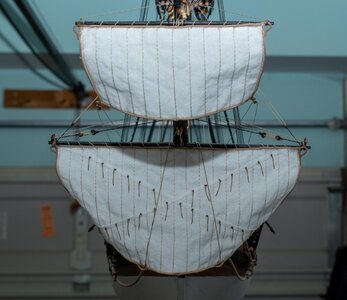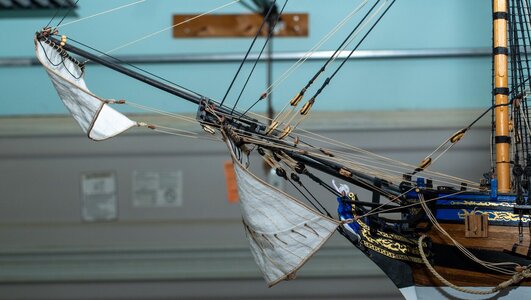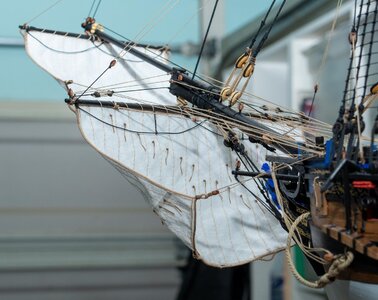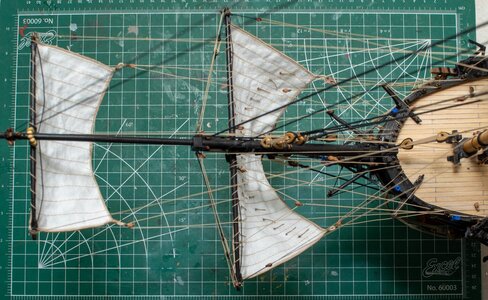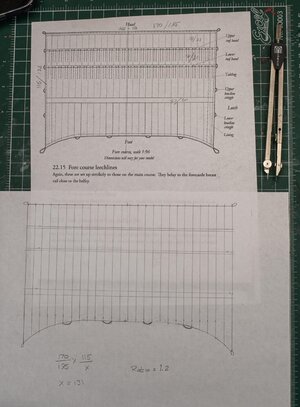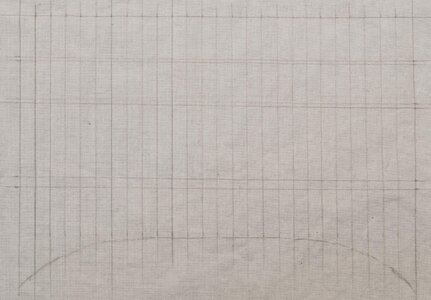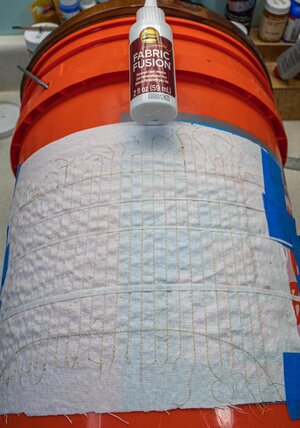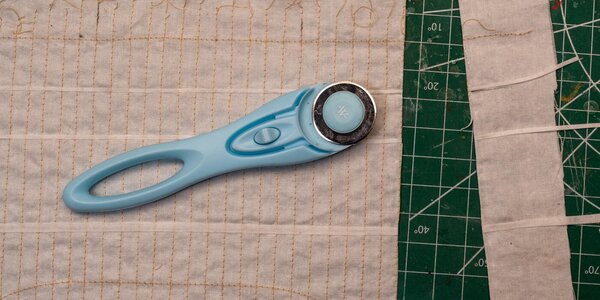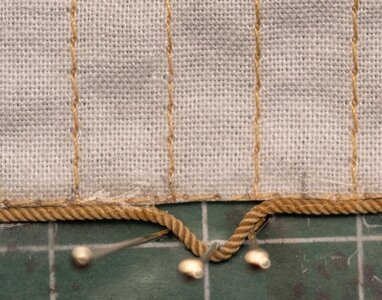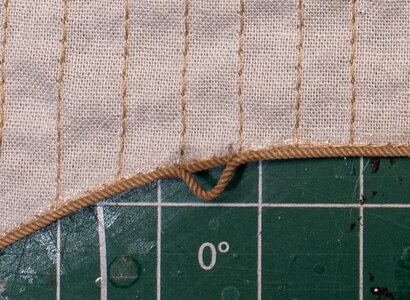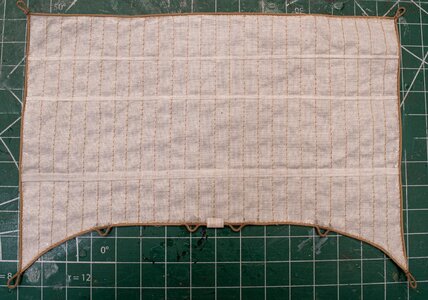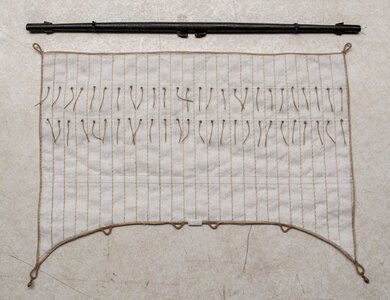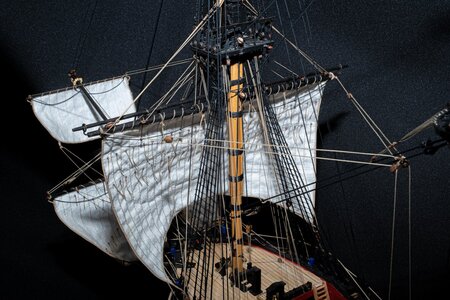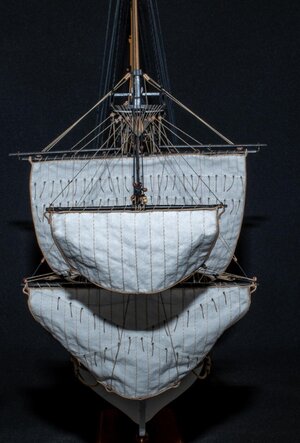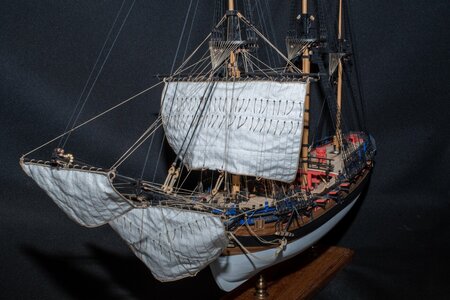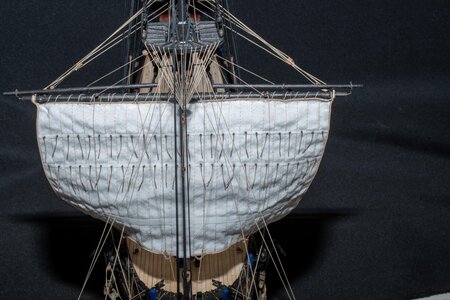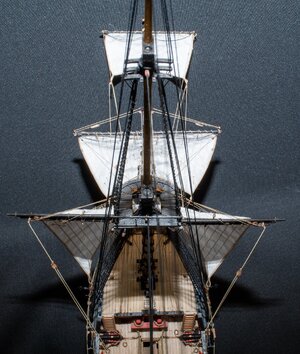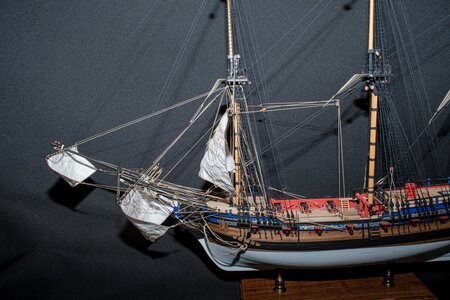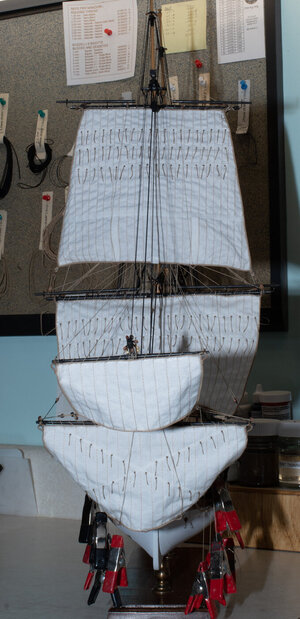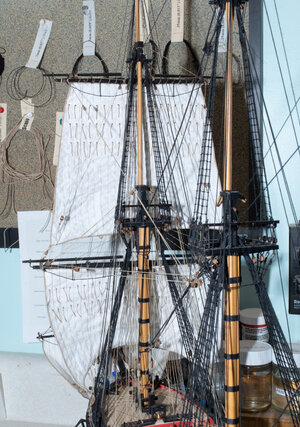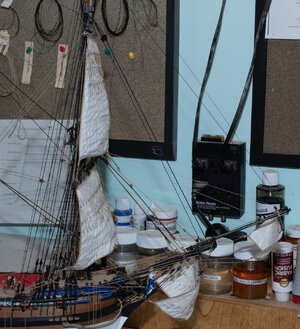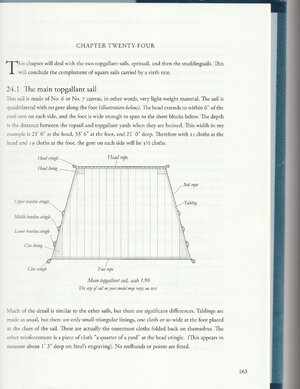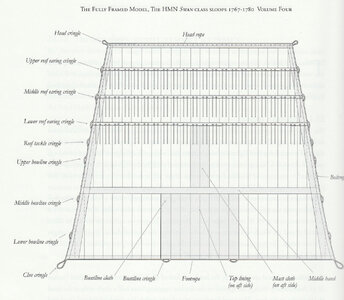Thought I'd go into a little more detail on how I make my sails. I watched a lot of videos and read several articles on model sail making and came up with a compilation of ideas that produced the look I was going for.
First I run the sail cloth through a washing machine cycle and let air dry. I want the wrinkles in the fabric so it looks more realistic. Then make a copy of the sail pattern from David Antscherl's book
"The Fully Framed Model, Volume IV". Then I made a scale copy on paper after I calculating the ratio from the book to my build. I omitted the leach line cringles because I'm only adding the bunt lines. Things are getting a little to busy for me to handle.
View attachment 370408
Next, transfer the pattern from paper to the sail cloth and sew along all the lines except for the reef bands. These lines will be covered when the reef bands are add later.
View attachment 370409
After sewing all the lines, I coat the sail edges with fabric glue to keep things from unravelling. It holds well and is very flexible. I glued on the reef bands over a bucket in hopes of getting a slight belly in the sail but it didn't work so I'll omit the bucket on the next sail.
View attachment 370410
I found a rotary fabric cutter works great for trimming the sail except for the arc at the foot which I trimmed with scissors.
View attachment 370411
Using the fabric glue, I attached the bolt rope along the edge of the sail and added the buntline cringles.
View attachment 370412
View attachment 370414
Now ready to add the reef lines.
View attachment 370415
